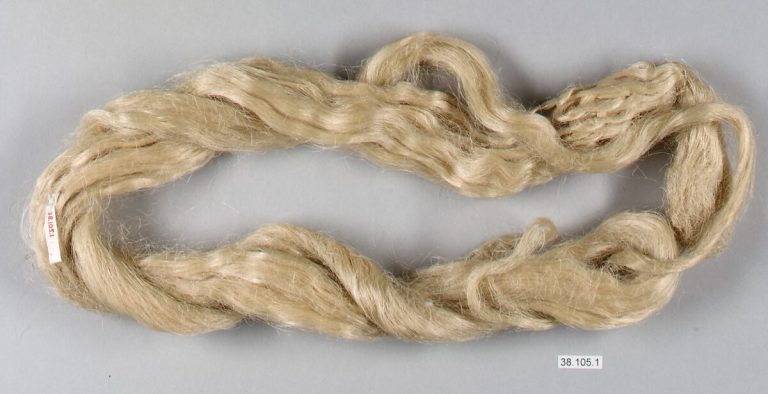Jade, as valuable as gold in Chinese culture, is precious not only for its aesthetic beauty. It possesses many unusual characteristics that give it great cultural and spiritual value. Yù (玉 jade), is one of the oldest characters in the Chinese language; originating as a pictograph in 2950 BC depicting three pieces of jade strung together. It is distinguished from the character wang (王, king) with a single dot.
Geologically, jade is a metamorphic rock that is classified into two types: soft jade (nephrite), and hard jade (jadeite). Until the Qing Dynasty (1271-1368), when jadeite began to be imported from Burma, China had only nephrite. Thus, soft jade is considered to be the traditional Chinese gemstone. Jade can come in a range of colors, from greens, to whites, reds, and yellows, though green is the most common and favored color. Nephrite in the white shades is also known as “mutton fat,” and is highly prized.
Mythically, jade is a magical stone sent from Heaven. More than one story relates a fantastic origin for jade, and people of many cultures regard it as having mystical powers. In one story, jade was created when northern tribes invaded China. Dragons’ tears for those slain fell to the ground and became the precious stone. Another legend holds jade to be crystalized moonlight.
Regardless of its origin, jade is believed to have an abundance of amazing powers. Many attest to its protective and healing capacity. There have been numerous incidents where people wearing jade bangles were saved from a serious illness or accident when their bangle broke at the critical moment.

Belief in the stone’s ability to preserve life was so strong that it was often used in burials. One ancient prince, Liu Sheng, was buried in a suit fashioned entirely of small jade plates sewn together with gold thread. Less extravagant mourners used tongue amulets or other small jade carvings to protect the body from decomposition. In order to prolong life, some would ingest powdered jade mixed with water. Taken just before death, it was believed to slow the body’s decomposition.
Success
You are now signed up for our newsletter
Success
Check your email to complete sign up
Amulets, pendants, and statuettes are common uses today, but jade was once used for a variety of practical purposes, being carved into everything from tools, to vessels, to musical instruments. In fact, jade is unique in its musical properties.
There is an old gemological saying “If you take a hammer and hit a diamond, the diamond will shatter into a dozen pieces. Hit a piece of quartz and it’ll split in two. However, if you hit a piece of jade, it’ll ring like a bell!” Melodically resonant jade has been used to make chimes, xylophones, flutes and gongs, which produce “heavenly” tones.
Spiritual qualities
Jade’s mystical properties are surpassed only by its spiritual endowments. All humanity is guided by a moral compass, helping us to live by way of virtue. As Confucius points out, de (德 virtue) is represented in many aspects of this worthy gem.
“The wise have likened jade to virtue. For them, its polish and brilliancy represent the whole of purity; its perfect compactness and extreme hardness represent the sureness of intelligence; its angles, which do not cut, although they seem sharp, represent justice; the pure and prolonged sound, which it gives forth when one strikes it, represents music.
“Its color represents loyalty; its interior flaws, always showing themselves through the transparency, call to mind sincerity; its iridescent brightness represents heaven; its admirable substance, born of mountain and of water, represents the earth. Used alone without ornamentation it represents chastity. The price that the entire world attaches to it represents the truth.” (Book of Rites)

In the Chinese theory of the Five Elements, all natural substances have a life force, or chi, that flows through and among them. Because jade is of the Earth, but possesses a luminous quality like the sun and stars, it is considered to be a connection between Heaven and Earth. Ranging in color from green, to red, yellow, white, and black, jade could be said to encompass all of the five elements, as each element corresponds to one of these colors. A piece of jade that has more than one color is more valuable spiritually, as this enhances its auspicious qualities.
Since each of the colors also corresponds to a major internal organ and the emotions associated with it, jade can be considered beneficial to the health of the whole mind and body.
Divided into light and dark, jade can also represent both the yin and yang energies of the cosmos. Lighter, more translucent jade is considered yin, and would have softer energy. Darker, more opaque jades would be considered yang, with a more powerful energy, enhancing the ability to overcome adversity.
From jewels to Feng Shui, jade can both bring joy and good fortune. A jade object placed in your home can strengthen your chi, or life force; while wearing jade can clear the body’s meridians, or energy channels, and protect one from harm. But as a living stone, jade should be used and seen. If it is tucked away its powerful energy can become weak.
















